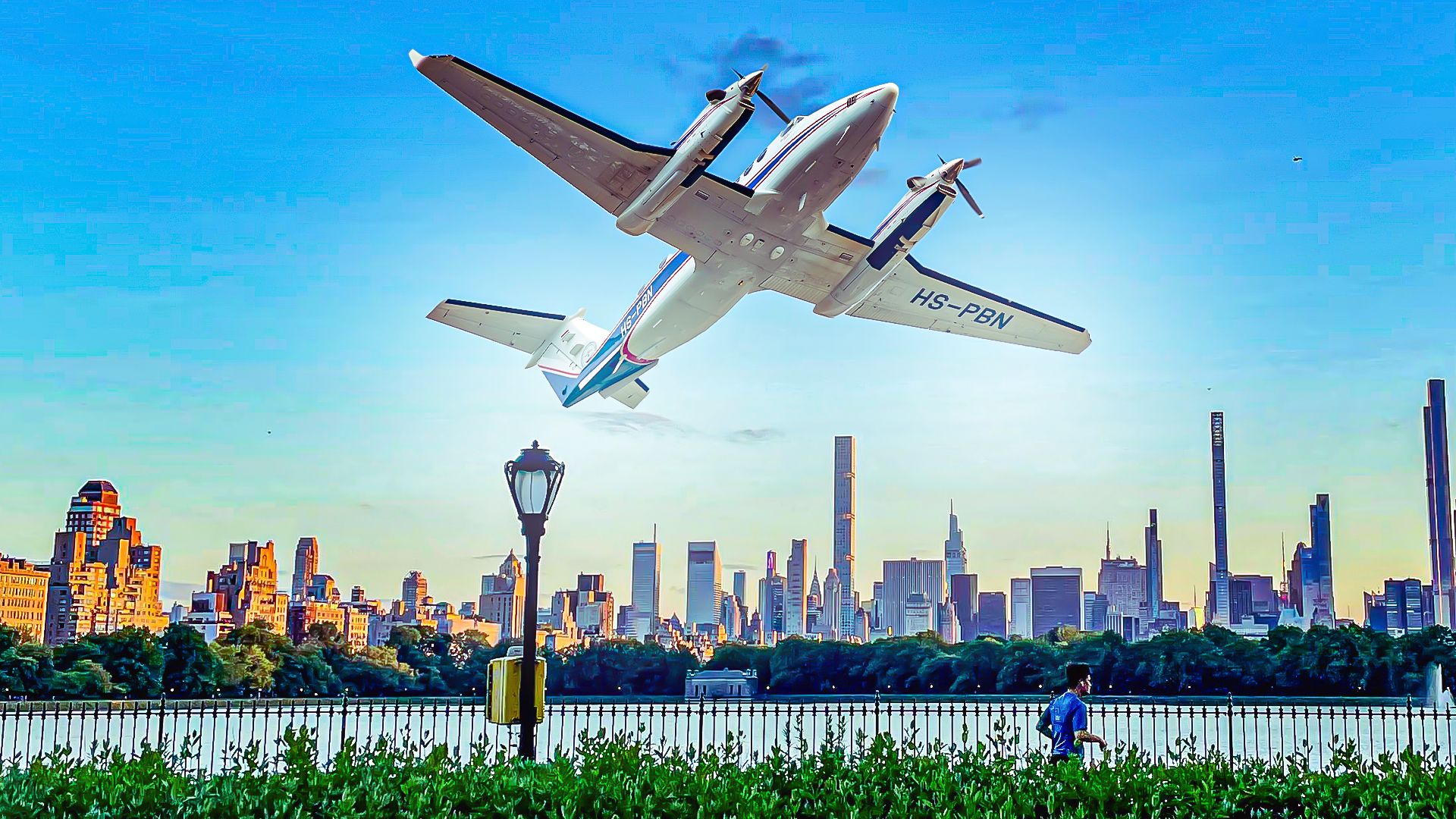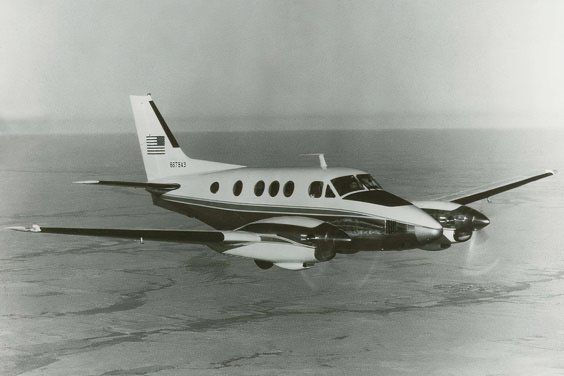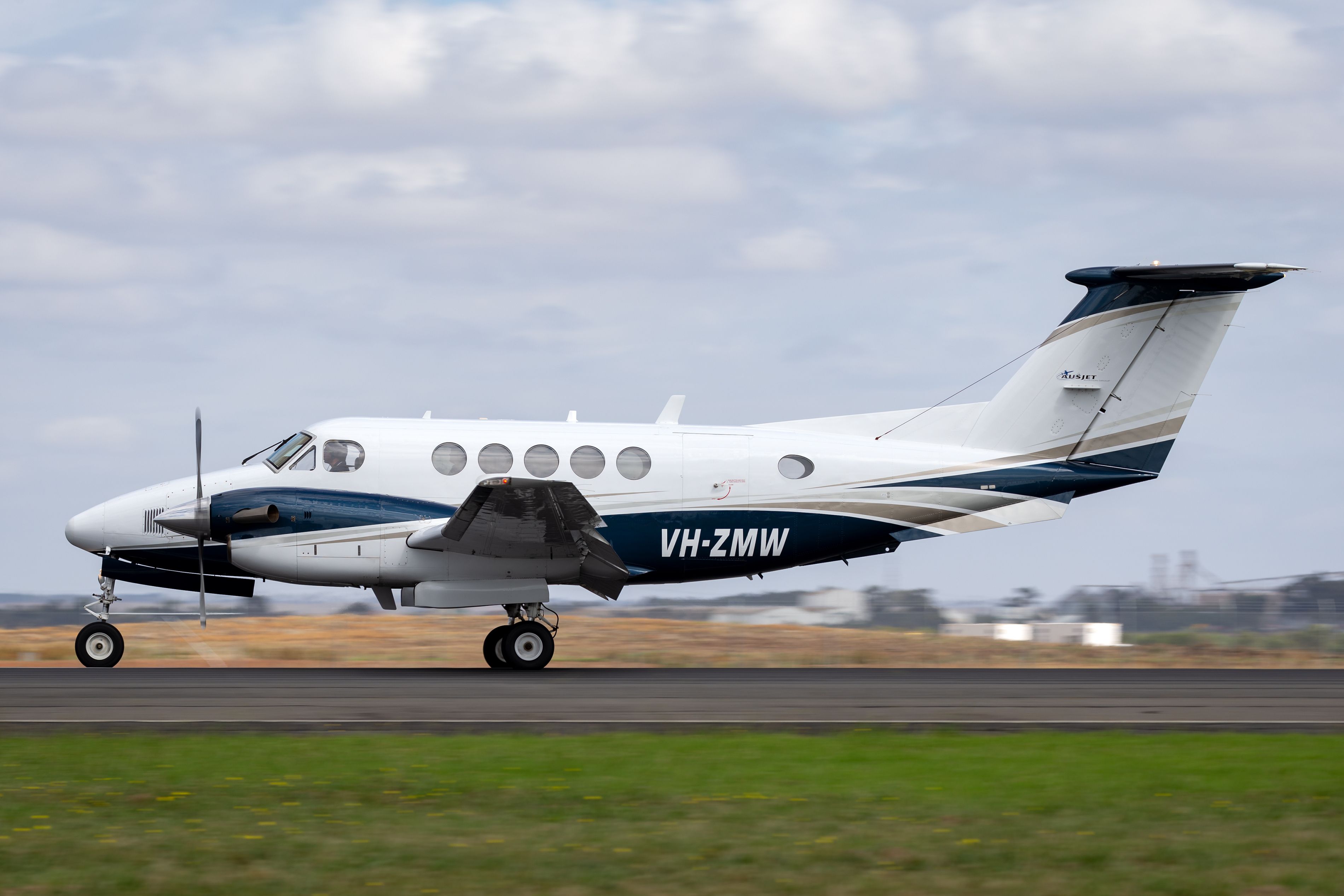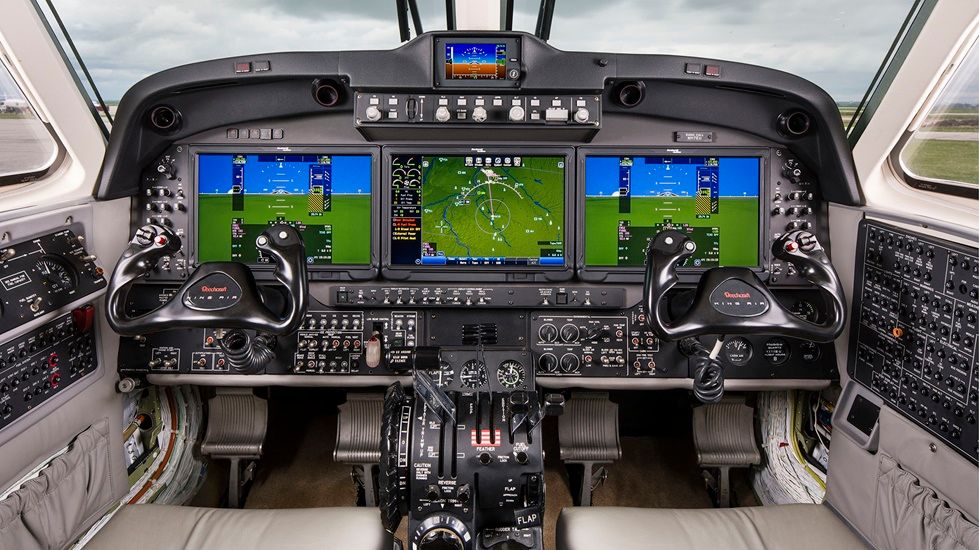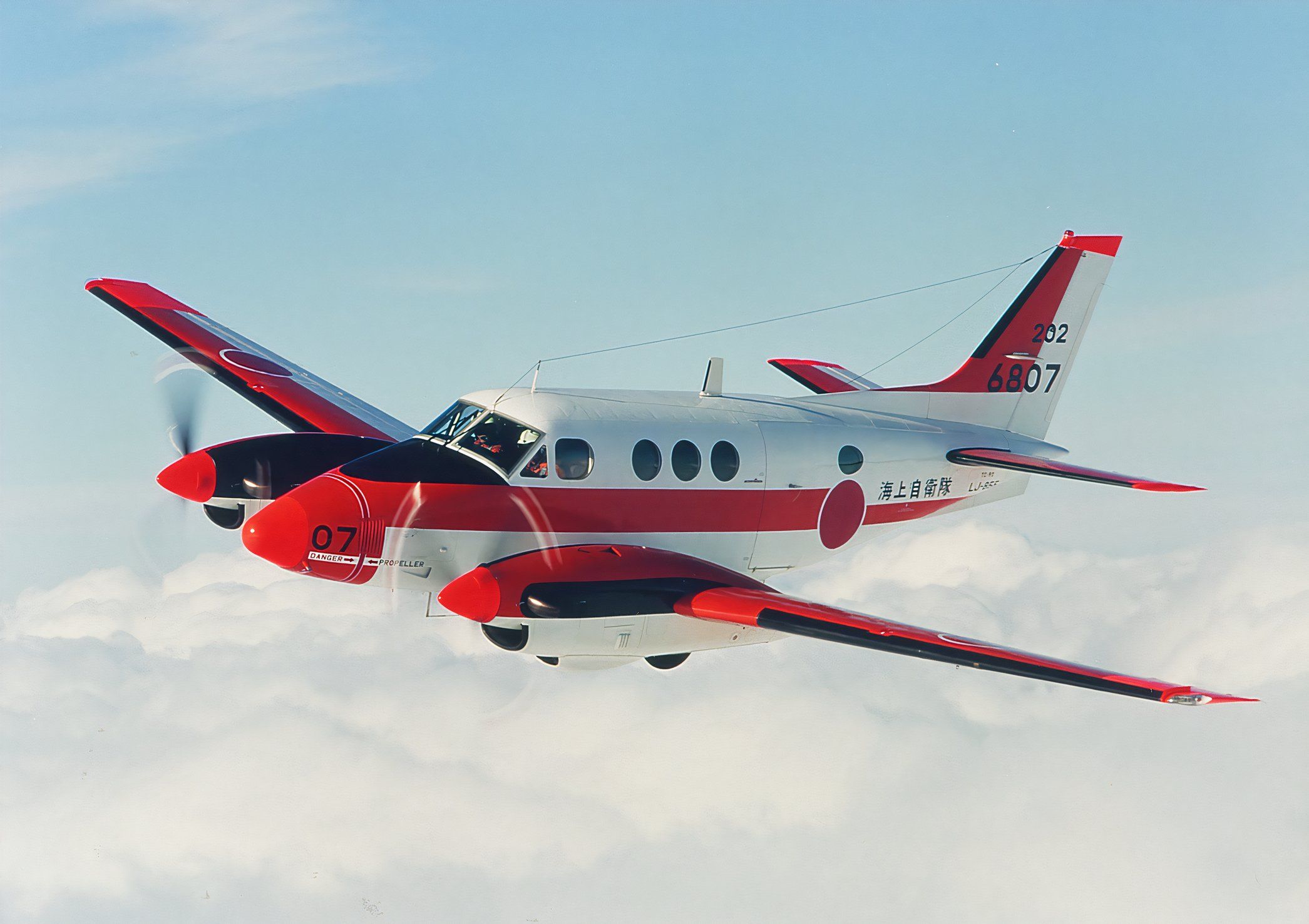Summary
- The Super King Air evolved from the King Air 90, bridging the gap between piston-engine aircraft and jets.
- The transformation included engine advancements using more powerful PT6A variants, exceeding 300 mph cruise speed.
- The Super King Air’s design refinements improved passenger comfort, aerodynamics, stability, and market adaptability.
The Beechcraft Super King Air has been a cornerstone of turboprop aviation for decades. Here are five key facts about its transformation.
1
The Super King Air had its roots in 1964
Beechcraft developed the aircraft from the piston-engine Queen Air
The Super King Air’s story begins with its predecessor, the Queen Air. Beechcraft introduced the original King Air 90 in 1964, taking business aviation to a new level.
Photo: Beechcraft
To bridge the gap between piston-engine aircraft like the piston-powered Beechcraft Queen Air and jets, Beechcraft created the Pratt & Whitney PT-6A-6 equipped King Air 90 turboprop. Beech made a versatile airplane that could fly higher and farther than piston engines while operating from short runways.
As the market demanded more, Beechcraft continued to innovate. In 1969, it began developing the Model 200 Super King Air.
The Super King Air 200 was introduced in 1973, expanding the King Air product line and solidifying Beechcraft’s position in the twin-engine turboprop market. Along the way, Beechcraft introduced two smaller versions, the King Air C90 and F90.
Beechcraft also designed the B100 turboprop. The primary reason Beechcraft developed the B100 was an engine supply issue.
A Pratt & Whitney Canada labor strike disrupted the delivery of PT6A engines used in King Air models. Beechcraft was compelled to look for an alternative engine supplier to continue production. Beechcraft chose the Garrett (now Honeywell) TPE331 turbine engine to power the new B100 variant.
The B100 thus became the only King Air variant not powered by the P&W PT-6 engine.
2
The Pratt & Whitney Canada PT-6 still powers the King Air
Engine and propeller technology evolved with each new King Air model
A crucial aspect of the Super King Air’s transformation has been its engine development: The original King Air used Pratt & Whitney Canada PT6A-6 engines.
For the Super King Air 200, Beechcraft opted for more powerful PT6A-41 engines, producing 850 shaft horsepower (shp) each. Later models, like the B200, continued this trend with PT6A-42 engines, maintaining the 850 shp output but with improved efficiency from engine and propeller technology advances.
These engine upgrades allowed for higher cruise speeds, exceeding 300 mph. Beechcraft engineers improved climb and cruise performance and gained better fuel efficiency.
Five aircraft manufacturers sought to create aircraft to compete with the King Air 90 and 200:
- Cessna (Conquest I & II)
- Mitsubishi (MU-2)
- Rockwell (Commander 690)
- Piper (Cheyenne I & II)
- Swearingen Merlin
All five competitors built their aircraft using the Garrett AirResearch TPE-331 turbine engine. Cessna and Piper built variants, Conquest II and Cheyenne II, respectively, using the P&W PT-6.
3
Beechcraft added advanced propellers, wingtips, and a T-tail
Raisbeck mods made the King Air faster and more efficient
Photo: Ryan Fletcher / Shutterstock.com
The Super King Air’s design has undergone several refinements over the years. The Model 200 featured a longer fuselage than its predecessors, allowing for more comfortable passenger accommodation.
Engineers relocated the engines higher and further outboard on the wing to accommodate larger propellers. The engine relocation also produced a quieter cabin.
Later models introduced a T-tail design, improving aerodynamics and stability. Beechcraft also incorporated essential aerodynamic and engine modifications developed by aeronautical engineer James D. Raisbeck as after-market upgrades.
These changes increased passenger comfort, enhanced performance characteristics, and improved handling, especially during takeoff and landing.
4
The latest technology gradually replaced avionics from the 1950s
Collins Aerospace Proline Fusion is the ultimate avionics advancement
Photo: Collins Aerospace
As aviation technology advanced, so did the Super King Air. Early models featured basic flight instruments for all-weather capabilities. Over time, Beechcraft incorporated sophisticated electronics packages, including advanced autopilot systems and radar.
Modern Super King Airs equipped with glass cockpits and integrated avionics suites enhance pilot situational awareness and reduce workload.
5
The King Air is a champion of market adaptability and brand longevity
The King Air is among the most versatile turboprops
Perhaps the most remarkable aspect of the Super King Air’s transformation is its enduring popularity and adaptability. Since its introduction, over 7,000 King Air series aircraft have been sold, accumulating over 60 million flight hours worldwide.
The Super King Air has seen various roles beyond business aviation, including military applications, air ambulance services, and regional airline operations. The Beechcraft C99 airliner was a popular 19-passenger commuter airliner that, like the King Air, was derived from the Beechcraft Queen Air.
Photo: Wikipedia Commons
The National Oceanic and Atmospheric Administration operates King Airs for coastal mapping and emergency response missions.
Beechcraft has continuously updated the Super King Air line to meet changing market demands, introducing models like the 300 and 350 with even greater capabilities.
This adaptability has allowed the Super King Air to remain relevant and desirable in a rapidly changing aviation landscape, competing effectively against turboprops and light jets.
The transformation of the Beechcraft Super King Air from its King Air roots to its current incarnation represents a remarkable journey of continuous improvement and market responsiveness. Its engine evolution, design, technology, and versatility have cemented its place as a mainstay in turboprop aviation, with a legacy spanning over half a century.
Notable owners and pilots of the Beechcraft King Air:
- Harrison Ford: The actor is a well-known aviation enthusiast and has owned and piloted several aircraft, including a Beechcraft King Air.
- Jimmy Buffett: The late singer-songwriter flew his own King Air.
- Arnold Palmer: The legendary golfer owned and piloted a King Air for many years.
- John Travolta: While more famous for his Boeing 707, Travolta has also owned and flown King Airs.
At least fifteen U.S. states operate the Beechcraft King Air for official air transportation:
- Alaska
- Arizona
- Arkansas
- Colorado
- Florida
- Georgia
- Indiana
- Michigan
- Montana
- New Mexico
- New York
- North Dakota
- Ohio
- Tennessee
- Washington

